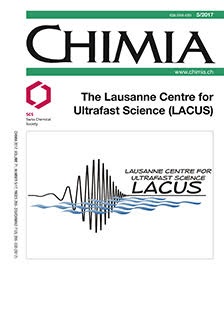Several Semiclassical Approaches to Time-resolved Spectroscopy
DOI:
https://doi.org/10.2533/chimia.2017.283Keywords:
Dephasing representation, Fidelity amplitude, Phase averaging, Semiclassical approximation, Time correlation function, Time-resolved stimulated emissionAbstract
Ultrafast spectroscopy allows molecular dynamics to be resolved on the femtosecond time scale. Whereas such short time scales obviously pose many experimental challenges, they provide an opportunity for semiclassical methods, which are naturally suited for short time dynamics. Here we review several semiclassical approaches for evaluating vibrationally resolved electronic pump-probe spectra, starting with the simplest, 'phase averaging' or 'dephasing representation'. We continue by discussing several methods developed in our group that allow increasing the efficiency (the cellular dephasing representation) and accuracy (cellular dephasing representation with a prefactor) and end with the Gaussian dephasing representation, which, despite its semiclassical origins, converges to the exact quantum result. The merits as well as shortcomings of the different approaches are demonstrated on time-resolved stimulated emission spectra of NCO and pyrazine.Downloads
Published
2017-05-31
How to Cite
[1]
J. Vaníček, Chimia 2017, 71, 283, DOI: 10.2533/chimia.2017.283.
Issue
Section
Scientific Articles
License
Copyright (c) 2017 Swiss Chemical Society

This work is licensed under a Creative Commons Attribution-NonCommercial 4.0 International License.







